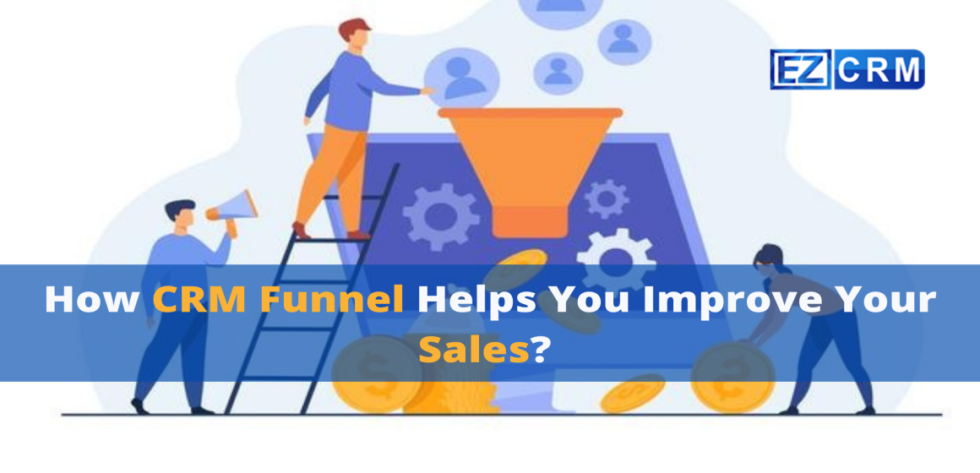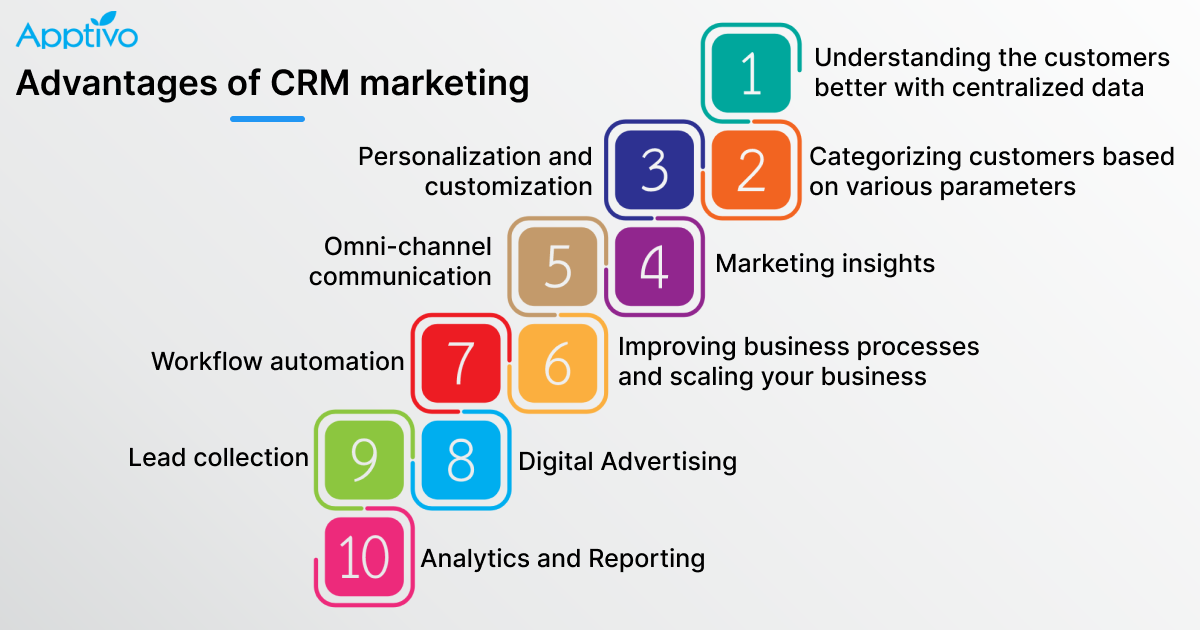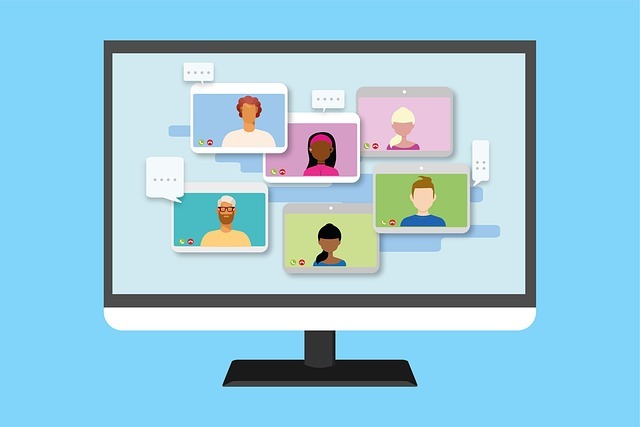
The Power of a Well-Defined CRM Marketing Funnel
In today’s dynamic business landscape, understanding and leveraging the customer journey is paramount. This is where the CRM marketing funnel comes into play. It’s more than just a buzzword; it’s a strategic framework designed to guide potential customers through various stages, from initial awareness to becoming loyal advocates for your brand. This detailed guide will walk you through the entire process, from the initial setup to optimizing your CRM marketing funnel for maximum impact. We’ll explore the core components, provide actionable strategies, and offer insights into how to tailor your approach to achieve remarkable results.
Before diving into the setup, let’s clarify the fundamental concept. A CRM marketing funnel is a visual representation of the customer journey. It’s a structured process that outlines the steps a potential customer takes, from the moment they first encounter your brand to the point where they become a paying customer and ideally, a repeat purchaser. This funnel helps you visualize the customer’s experience and identify potential bottlenecks or areas for improvement. The ultimate goal is to nurture leads, convert them into paying customers, and foster long-term customer loyalty.
Understanding the Stages of the CRM Marketing Funnel
The CRM marketing funnel typically consists of several key stages. While the specific names and categorizations may vary, the core principles remain the same. Let’s break down the typical stages:
1. Awareness Stage (Top of the Funnel – TOFU)
This is where your potential customers first become aware of your brand. They might discover you through social media, search engines, paid advertising, or word-of-mouth. The primary goal at this stage is to generate interest and capture attention. Content marketing plays a crucial role here. Think blog posts, informative videos, engaging infographics, and social media campaigns designed to educate and entertain. Don’t focus on selling; instead, provide value and establish your brand as a thought leader in your industry. The aim is to attract a broad audience and build initial brand recognition.
Consider these strategies for the awareness stage:
- SEO Optimization: Ensure your website and content are optimized for relevant keywords.
- Social Media Engagement: Build a strong presence on relevant social media platforms.
- Paid Advertising: Utilize targeted advertising campaigns (e.g., Google Ads, social media ads) to reach a wider audience.
- Content Marketing: Create valuable content that addresses the needs and interests of your target audience.
2. Interest Stage (Middle of the Funnel – MOFU)
At this stage, potential customers have expressed some interest in your brand or product. They might have visited your website, downloaded a free resource, or signed up for your email list. The goal here is to nurture these leads and provide them with more detailed information about your offerings. This is where you start to build relationships. Provide solutions to their problems. Lead nurturing is a key strategy here. This involves sending targeted emails, offering webinars, providing case studies, and showcasing testimonials. The objective is to move leads closer to making a purchase decision.
Consider these strategies for the interest stage:
- Email Marketing: Implement a well-structured email marketing campaign to nurture leads.
- Webinars and Demos: Host webinars or provide product demos to showcase your offerings.
- Case Studies and Testimonials: Share success stories and customer testimonials to build trust.
- Targeted Content: Create content that addresses specific pain points and offers solutions.
3. Decision Stage (Middle of the Funnel – MOFU)
This is where potential customers are actively evaluating their options and considering your product or service. They’re likely comparing your offerings to those of your competitors. The goal here is to convince them that your solution is the best fit for their needs. Provide them with compelling reasons to choose you. Offer special promotions, free trials, or consultations to help them make a decision. Make the purchasing process as smooth and easy as possible.
Consider these strategies for the decision stage:
- Special Offers and Promotions: Provide incentives to encourage purchases.
- Free Trials and Demos: Offer free trials or product demos to allow potential customers to experience your product.
- Comparison Charts: Create comparison charts to highlight the benefits of your offerings.
- Clear Call-to-Actions: Use clear and concise calls-to-action (CTAs) to guide potential customers toward making a purchase.
4. Action Stage (Bottom of the Funnel – BOFU)
This is the stage where the potential customer makes a purchase. The focus here is on finalizing the sale and ensuring a seamless customer experience. Make the purchase process effortless. Offer multiple payment options, provide excellent customer service, and ensure a secure checkout process. The goal is to convert leads into paying customers.
Consider these strategies for the action stage:
- Easy Checkout Process: Simplify the checkout process to minimize friction.
- Multiple Payment Options: Offer a variety of payment options to accommodate customer preferences.
- Exceptional Customer Service: Provide responsive and helpful customer service.
- Order Confirmation and Tracking: Send order confirmations and provide order tracking information.
5. Loyalty Stage (Post-Purchase)
The customer has made a purchase, but your job isn’t over. The goal is to retain customers and turn them into loyal advocates for your brand. Focus on providing excellent post-purchase support, building relationships, and encouraging repeat purchases. Implement customer loyalty programs, send personalized emails, and solicit feedback to continuously improve your offerings. Happy customers are more likely to become repeat customers and recommend your brand to others.
Consider these strategies for the loyalty stage:
- Customer Support: Provide excellent customer support to address any issues or concerns.
- Loyalty Programs: Implement customer loyalty programs to reward repeat purchases.
- Personalized Communication: Send personalized emails and offers based on customer behavior.
- Feedback and Reviews: Solicit feedback and reviews to improve your offerings and build social proof.
Setting Up Your CRM for Marketing Funnel Success
Now that we’ve covered the stages, let’s delve into setting up your CRM to support your marketing funnel. The right CRM system is the backbone of your marketing efforts, enabling you to manage leads, track customer interactions, and automate marketing activities. Choosing the right CRM is crucial. Consider your business size, industry, and specific needs.
Choosing the Right CRM System
Selecting the right CRM system is a critical first step. There are numerous options available, each with its own strengths and weaknesses. Consider these factors when making your decision:
- Scalability: Can the CRM system scale to accommodate your growing business needs?
- Features: Does the CRM system offer the features you need, such as lead management, email marketing, and sales automation?
- Integration: Does the CRM system integrate with your existing tools and platforms?
- Ease of Use: Is the CRM system user-friendly and easy to learn?
- Pricing: Does the CRM system fit within your budget?
Some popular CRM systems include:
- Salesforce: A comprehensive CRM system suitable for businesses of all sizes.
- HubSpot CRM: A free CRM system with powerful marketing automation features.
- Zoho CRM: A versatile CRM system with a focus on sales and marketing.
- Pipedrive: A sales-focused CRM system designed for small businesses.
- Microsoft Dynamics 365: A robust CRM system with a wide range of features.
Configuring Your CRM for the Marketing Funnel
Once you’ve selected a CRM system, it’s time to configure it to support your marketing funnel. This involves setting up various components, including:
- Lead Capture Forms: Create lead capture forms to collect information from potential customers.
- Lead Scoring: Implement lead scoring to prioritize leads based on their behavior and engagement.
- Workflow Automation: Set up automated workflows to nurture leads and move them through the funnel.
- Email Templates: Create email templates for various stages of the funnel.
- Reporting and Analytics: Configure reporting and analytics to track your progress and identify areas for improvement.
Integrating Your CRM with Other Marketing Tools
To maximize the effectiveness of your CRM marketing funnel, it’s essential to integrate your CRM with other marketing tools. This allows you to automate tasks, streamline processes, and gain a holistic view of your customer journey.
Consider these integrations:
- Email Marketing Platforms: Integrate your CRM with email marketing platforms (e.g., Mailchimp, Constant Contact) to automate email campaigns.
- Social Media Management Tools: Integrate your CRM with social media management tools (e.g., Hootsuite, Buffer) to manage your social media presence.
- Website Analytics: Integrate your CRM with website analytics tools (e.g., Google Analytics) to track website traffic and customer behavior.
- Marketing Automation Platforms: Integrate your CRM with marketing automation platforms (e.g., Marketo, Pardot) to automate complex marketing workflows.
Designing Your CRM Marketing Funnel: A Step-by-Step Guide
Now, let’s walk through the process of designing your CRM marketing funnel. This involves defining your target audience, mapping the customer journey, and creating content and campaigns that align with each stage.
1. Define Your Target Audience
The first step is to clearly define your target audience. Who are you trying to reach? What are their demographics, interests, and pain points? Understanding your target audience is crucial for creating relevant content and campaigns. Develop detailed buyer personas to represent your ideal customers. This will help you tailor your messaging and communication strategies to resonate with their specific needs and preferences. Research your target audience thoroughly.
Consider these methods for defining your target audience:
- Market Research: Conduct market research to gather data about your target audience.
- Customer Surveys: Send surveys to your existing customers to gather feedback and insights.
- Social Media Analytics: Analyze your social media data to understand your audience’s demographics and interests.
- Website Analytics: Analyze your website analytics to understand your audience’s behavior.
2. Map the Customer Journey
Once you understand your target audience, map out their journey through your marketing funnel. What steps do they take from the moment they become aware of your brand to the point where they make a purchase? Identify the touchpoints where you interact with your potential customers, such as your website, social media, and email. This will help you identify the content and campaigns you need to create for each stage of the funnel.
Consider these elements when mapping the customer journey:
- Touchpoints: Identify all the touchpoints where your potential customers interact with your brand.
- Content Needs: Determine the content you need to create for each stage of the funnel.
- Call-to-Actions: Define the calls-to-action you want to use at each stage.
- Metrics: Identify the metrics you will track to measure the success of your funnel.
3. Create Content and Campaigns for Each Stage
Now, it’s time to create content and campaigns that align with each stage of the funnel. This includes blog posts, videos, social media posts, email campaigns, and more. The goal is to provide value to your potential customers and move them closer to making a purchase. Tailor your content to the specific needs and interests of your audience at each stage. Ensure your content is engaging, informative, and relevant. Use a variety of content formats to keep your audience engaged.
Consider these content and campaign ideas:
- Awareness Stage: Create blog posts, infographics, and social media campaigns.
- Interest Stage: Offer webinars, case studies, and testimonials.
- Decision Stage: Provide special offers, free trials, and comparison charts.
- Action Stage: Simplify the checkout process and offer multiple payment options.
- Loyalty Stage: Implement customer loyalty programs and solicit feedback.
4. Implement Lead Scoring
Lead scoring is a method of assigning points to leads based on their behavior and engagement. This helps you prioritize leads and focus your efforts on those who are most likely to convert. Assign points to leads based on their interactions with your website, emails, and social media. Set a threshold for qualified leads and pass them on to your sales team. Regularly review and adjust your lead scoring model to ensure its accuracy.
Consider these lead scoring factors:
- Website Activity: Track website visits, page views, and downloads.
- Email Engagement: Track email opens, clicks, and replies.
- Social Media Activity: Track social media engagement, such as likes, shares, and comments.
- Demographic Information: Consider demographic information, such as job title and industry.
5. Automate Your Workflows
Automation is key to streamlining your CRM marketing funnel and saving time. Set up automated workflows to nurture leads, send targeted emails, and trigger actions based on customer behavior. Use marketing automation tools to create complex workflows that personalize the customer experience. Automate repetitive tasks, such as sending follow-up emails and updating lead information. This will allow you to focus on more strategic activities.
Consider these workflow automation tasks:
- Lead Nurturing: Automate lead nurturing email sequences.
- Segmentation: Segment leads based on their behavior and demographics.
- Task Management: Automate task assignments and reminders.
- Reporting: Automate reporting and analytics.
6. Track and Analyze Your Results
Tracking and analyzing your results is essential for optimizing your CRM marketing funnel. Use your CRM system to track key metrics, such as website traffic, lead generation, conversion rates, and customer lifetime value. Analyze your data to identify areas for improvement and make data-driven decisions. Regularly review your funnel performance and make adjustments as needed. This will help you maximize your ROI and achieve your marketing goals.
Consider these metrics to track:
- Website Traffic: Track website visits, page views, and bounce rate.
- Lead Generation: Track the number of leads generated and the cost per lead.
- Conversion Rates: Track conversion rates at each stage of the funnel.
- Customer Lifetime Value: Calculate customer lifetime value to measure the long-term value of your customers.
Optimizing Your CRM Marketing Funnel: Tips and Best Practices
Once you’ve set up your CRM marketing funnel, the work doesn’t stop there. Continuous optimization is crucial for maximizing your results. Here are some tips and best practices to help you optimize your funnel:
- Regularly review your funnel performance: Track key metrics and identify areas for improvement.
- Test different content and campaigns: Experiment with different content formats, messaging, and CTAs.
- Segment your audience: Tailor your messaging to specific segments of your audience.
- Personalize your communication: Use personalized emails and offers to engage your customers.
- Provide excellent customer service: Address any issues or concerns promptly and professionally.
- Gather customer feedback: Use customer feedback to improve your offerings and customer experience.
- Stay up-to-date with industry trends: Keep abreast of the latest marketing trends and best practices.
- Continuously refine your strategy: Be prepared to adapt your strategy based on your results.
Common Challenges and How to Overcome Them
Setting up and optimizing a CRM marketing funnel can present several challenges. Here are some common challenges and how to overcome them:
- Data Quality: Ensure your CRM data is accurate, complete, and up-to-date. Implement data cleansing procedures to maintain data quality.
- Lack of Integration: Integrate your CRM with other marketing tools to streamline your processes.
- Poor Lead Nurturing: Implement a well-structured lead nurturing program to engage leads and move them through the funnel.
- Lack of Personalization: Personalize your communication to provide a more relevant customer experience.
- Insufficient Reporting: Implement robust reporting and analytics to track your progress and make data-driven decisions.
- Resistance to Change: Ensure buy-in from your team and provide adequate training.
- Limited Resources: Prioritize your efforts and focus on the most impactful activities.
The Future of CRM Marketing Funnels
The landscape of CRM marketing is constantly evolving. Here are some trends to watch:
- Artificial Intelligence (AI): AI-powered tools are being used to automate tasks, personalize customer experiences, and improve lead scoring.
- Personalization: Personalization is becoming increasingly important as customers expect tailored experiences.
- Omnichannel Marketing: Businesses are integrating their marketing efforts across multiple channels to provide a seamless customer experience.
- Data Privacy: Data privacy regulations are impacting how businesses collect and use customer data.
- Focus on Customer Experience: Businesses are placing a greater emphasis on providing exceptional customer experiences.
By staying informed about these trends, you can ensure your CRM marketing funnel remains effective and competitive.
Conclusion: Building a Successful CRM Marketing Funnel
Setting up a robust CRM marketing funnel is a strategic investment that can significantly impact your business’s growth. By understanding the stages, choosing the right CRM, designing a well-defined customer journey, and continuously optimizing your efforts, you can nurture leads, convert them into paying customers, and build lasting customer loyalty. Remember to focus on providing value, building relationships, and delivering exceptional customer experiences. With the right approach, your CRM marketing funnel will become a powerful engine for driving revenue and achieving your business goals. Embrace the journey, stay adaptable, and keep learning. The rewards of a well-executed CRM marketing funnel are well worth the effort.


